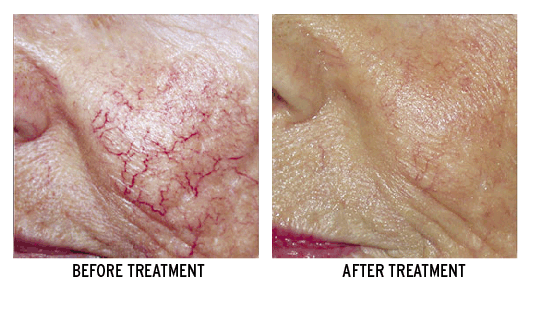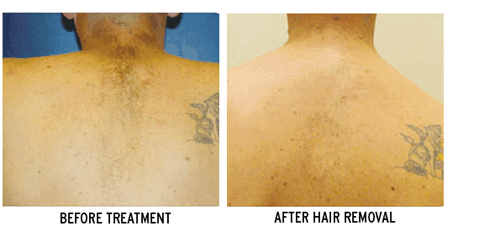Laser Technology Offers Treatment
for Many Conditions
Katherine Parkinson, MD
Dermatology
Parkinson Dermatology
Eau Claire
Since its invention in 1960, laser technology has evolved from the science laboratory to the medical clinic. Today’s laser technology offers patients precise, less invasive treatment options.
With minimal discomfort and excellent results, laser technology can safely treat the following:
- Warts
- Rosacea (rose-AY-sha) — a chronic skin disease that causes redness and swelling, primarily on the face
- Red Birthmarks
- Cherry Angiomas — a noncancerous (benign) skin growth
- Telangiectasias — small dilated blood vessels near the surface of the skin
- Spider Veins (legs)
- Brown Sun Spots (not melasma)
- Tattoos
- Unwanted hair

How does it work?
Laser technology works differently depending on the condition being treated. Laser works with a series of light pulses that target the energy.
- When treating warts, the light energy is absorbed by the oxyhemoglobin within the blood that supplies nutrients to the wart.
- For visible vessels, the pulses of light are absorbed into the blood vessels, causing them to heat and coagulate, collapsing the veins, which are then gradually reabsorbed by the body.
- When treating skin discolorations such as brown spots and tattoos, laser energy is selectively absorbed by the darker pigment, causing it to fragment into smaller particles that can be processed by the body.

- For hair removal (reduction), the laser emits a beam of light that is absorbed only by the hair follicle, leaving the skin unharmed. The light beam delivers energy, which is absorbed in the hair and transformed to heat. The heat destroys the hair follicle within a fraction of a second. Common areas treated by laser hair removal include face, upper lip, chin, underarms, forearms, bikini line, legs, stomach & back. Advantages to laser hair removal include the fact that it is a non-invasive method that does not require needles, chemicals or oily creams. Thousands of hairs can be treated in a single session with large areas treated effectively and efficiently. The best candidates for laser hair removal are those with contrasting dark hair and light skin. Currently, laser technology does not treat blonde or white hair. It is important to note that laser hair treatments do not result in the complete and/or permanent removal of hair, but rather a reduction in growth.
-
Laser treatments generally take approximately 10 to 30 minutes depending on the condition and/or size of the area being treated. During the treatment, you are given safety eyewear to protect your eyes from the laser light. A small, handheld instrument is used to deliver a laser pulse, which may produce some discomfort, similar
to slight pin pricks on the skin.
After treatment, some short-term pink, red or white coloration may be noticeable, however that will resolve over time. Healing time will depend upon the condition and area treated. As is the case with laser hair removal, your skin might also feel slightly sunburned for a few days after treatment. Normal activities may be resumed. Prior to laser treatments, as well as 6 months after, it is recommended that patients avoid sun exposure. The use of a sun block that contains an SPF of 30 or higher is also recommended throughout the course of treatment and is necessary to avoid further skin damage.
Please be aware of the following:
Multiple treatments are almost always required to achieve the desired results. For optimum results, the number of treatments can vary depending on the skin condition being treated, your skin type and the time between treatments. Treatment sessions are generally spaced four weeks apart and at 4-12 month intervals depending on the condition being treated. As with any treatment, it is important to be sure the individual treating you is fully trained and certified in the use of laser technology as permanent damage can occur in the event laser technology is used improperly.
~ For more information or to schedule an appointment with
Dr. Parkinson, Parkinson Dermatology, call: 715.635.3766 or visit www.parkinsondermatology.com. She sees patients in Spooner and Cumberland.




